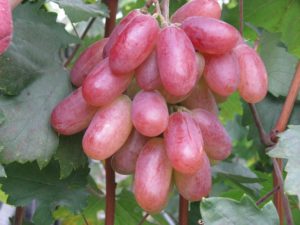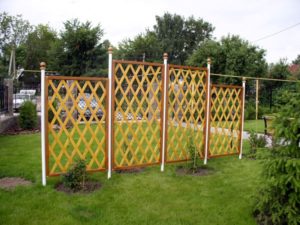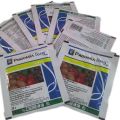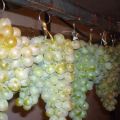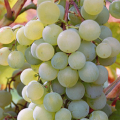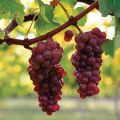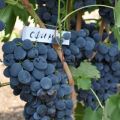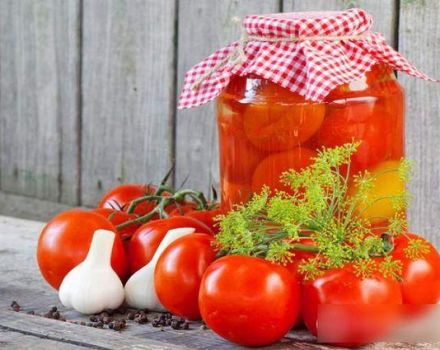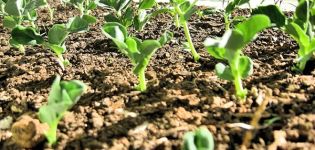Instructions for the use of the fungicide Falcon for grapes and the duration
To protect plants from diseases and preserve the grown crop, special preparations called fungicides are used. Their use requires adherence to certain rules, knowledge of techniques for working with drugs, their properties and principles of action. To combat grape diseases, a fungicide called Falcon is used, detailed instructions for its use can be found on this page.
Content
- 1 Composition of the preparation
- 2 Preparative form
- 3 Benefits of the tool
- 4 Requirements for the drug
- 5 Scope and spectrum of activity
- 6 Appointment
- 7 Compatibility with other substances
- 8 Toxicity
- 9 Instructions for use
- 10 Timing and frequency of processing vineyards
- 11 Storage conditions and shelf life of the fungicide
- 12 Falcon's cost and analogues
Composition of the preparation
The fungicide contains 3 components: Spiroxamine 25%, Tebuconazole 16.7%, Triadimenthol 4.3%. Spiroxamine has the ability to penetrate plant cells and inhibit the growth of fungal spores. Tebuconazole is a systemic drug that penetrates into plant cells and destroys fungal spores at the cellular level.
Triadimenol is an excipient that enhances the effectiveness of all components. Falcon has a narrow focus of action, focused on combating the disease of grapes with powdery mildew and powdery mildew.
Preparative form
Falcon is a light brown to dark brown liquid. It is produced in polyethylene cans, bottles or glass ampoules for 2, 5, 10 milliliters (for amateur gardeners with small garden plots).

Benefits of the tool
Falcon's advantages include the following properties:
- the fungicide belongs to the systemic group, penetrates into plant cells, is not washed off by rain;
- the fungicide belongs to the 3rd group of toxicity;
- low cost of the drug in comparison with analogues;
- duration of the protective period;
- use in conjunction with other drugs;
- not addictive when spraying the plant; it is possible to irrigate the site for several years;
- complete decomposition of the drug within 40 days after treatment;
- economy of consumption when spraying.
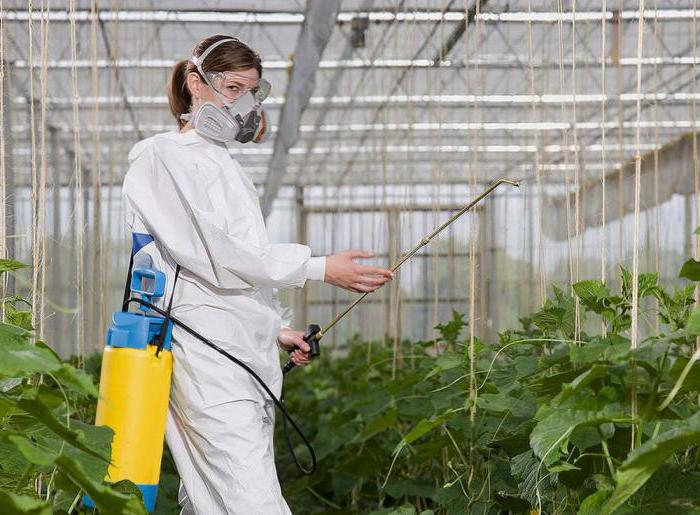
Requirements for the drug
The main requirements for fungicides, including Falcon, are:
- environmental Safety;
- low toxicity class;
- complete disintegration of the drug and not its accumulation in the soil and crop residues;
- non-addiction of plants to the drug and the duration of use in one area;
- low cost;
- long shelf life after opening and resealing the packaging.
Falcon fully complies with the requirements for fungicides.
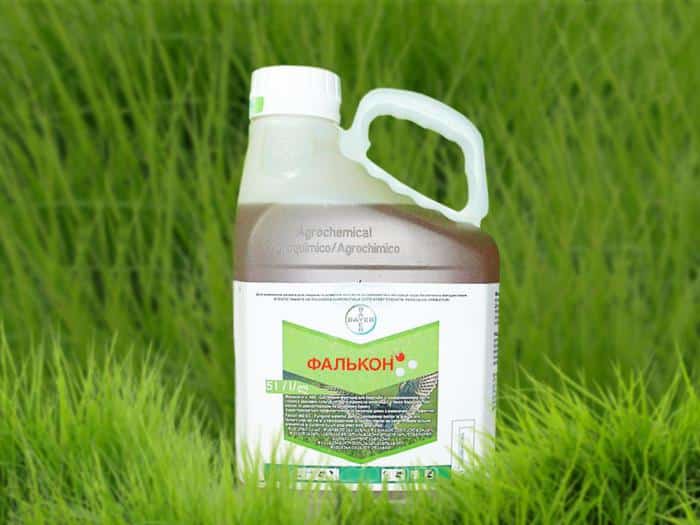
Impact speed
Subject to the rules for spraying grapes (preparation of a working solution, processing time, the presence of wind and precipitation), the waiting period for the onset of the drug action is about 2 hours. During this time, the fungicide penetrates the plant cells and begins a destructive effect on fungal spores.
Protective period
The maximum effectiveness of protection of grapes lasts for 2 weeks from the day of treatment, after which the effect of the drug begins to weaken, due to its decomposition as a result of the life of the plant. The disintegration time of the drug is accelerated at high ambient temperatures. Falcon decomposes at temperatures above +25 C. Plant protection is maintained, depending on weather conditions, from 30 to 40 days.
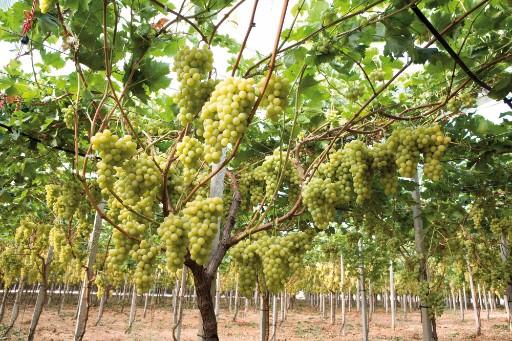
Scope and spectrum of activity
Falcon is used for the prevention and control of disease-causing fungal spores that cause diseases of grapes, grain crops, and sugar beets. Amateur gardeners successfully use this remedy in the fight against diseases of the following garden crops: rose, currant, strawberry, tomato, cucumber.
Despite the narrow spectrum of its action, it is in demand in areas with a humid and cool climate, where climatic conditions are favorable for the development and vital activity of spores of pathogenic fungi.
Appointment
Fungicide is used to treat:
- grain crops from powdery mildew, spotting, rust, brittle stems, septoria;
- sugar beets of different varieties from powdery mildew, phomosis, cercosporosis;
- grapes, for the disease and prevention of oidium.
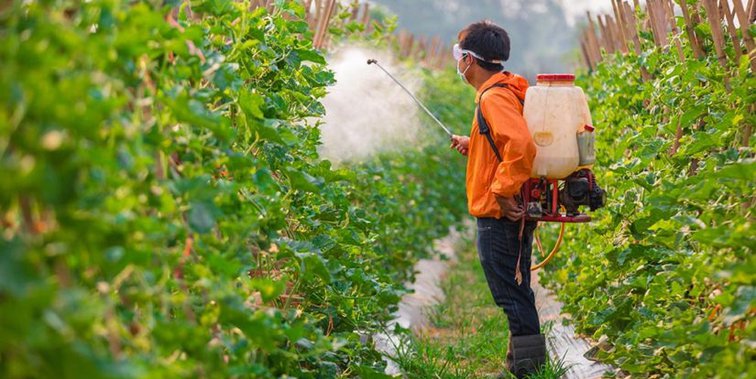
Compatibility with other substances
The narrow focus of Falcon's action involves its use in combination with protective agents aimed at other types of plant diseases. Compatibility can be determined by mixing a small amount of drugs in water and observing that they do not interact.
In the absence of bubbling, precipitation in the form of flakes, the formation of turbidity, heat release, you can use these drugs together, mixing in one container when diluted with water.
Toxicity
Falcon belongs to the 3rd class of toxicity agents, which defines it as a low-toxic agent. When using personal protective equipment while working with him, nothing threatens human health.
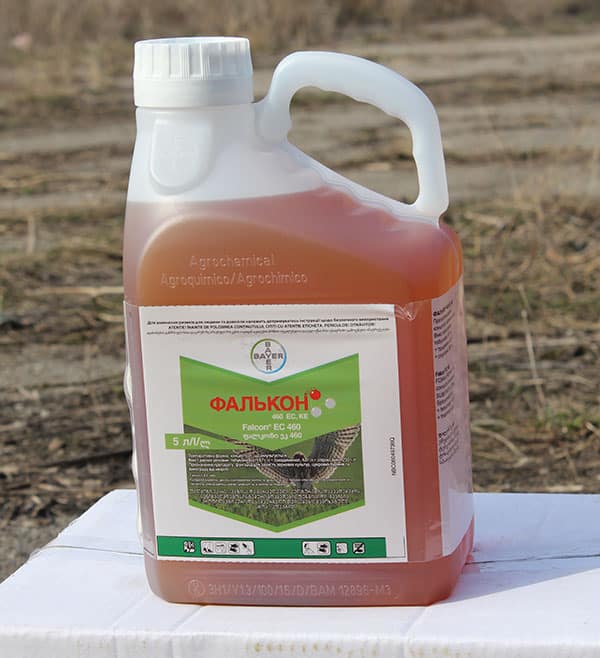
Its properties make it an environmentally friendly substance: decomposition in light and at temperatures above +25 C, complete disintegration after 40 days from the date of application.
Instructions for use
Falcon is a narrow-profile drug for the prevention and treatment of vines and berries from powdery mildew. For eradicating treatments in the spring and autumn periods (April and October), when the plant is at rest, it can be used in combination with other means.
Instructions for the use of the fungicide Falcon contains all the necessary information about its properties, the rules for working with it, the timing and rates of spraying grapes during preventive work and in case of illness.
Required materials and tools
For spraying in garden plots, ordinary hand-held sprayers are used; for large areas occupied by vineyards, more expensive equipment is used, with large volumes for working solutions and powerful sprinklers (nozzles).
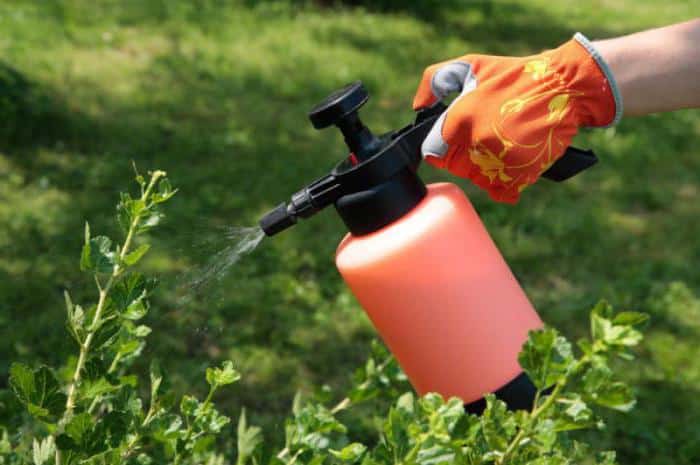
There are modern devices of the new generation, which, when sprayed, form a fine mixture of fungicide with cold or heated steam.
Consumption rate
The average consumption rate of the working solution when spraying is from 80 to 100 milliliters per 1 square meter of leaf surface. In fact, the working solution should completely cover the surface of the sheet before droplets form.
During preventive maintenance, the basic solution is taken 2 times less than during disinfection. Every year, when preparing working solutions, the dose of the basic solution is increased compared to the previous year.
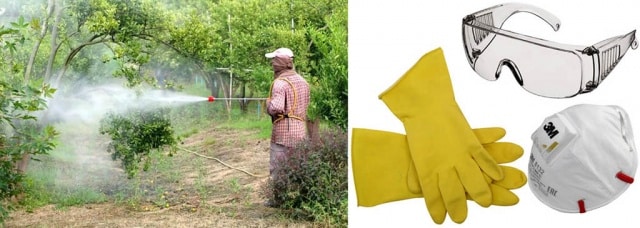
Preparation of working solution
For preventive spraying, a working solution is prepared from the main solution by diluting it with 10 liters of water according to the following scheme:
- 1 year - 3 milliliters;
- 2 years - 4 milliliters;
- 3 and 4 years - 6 milliliters;
- 5 years - 10 milliliters.
To disinfect a sick plant, solutions are prepared according to the following scheme:
- 1 year - 6 milliliters;
- 2 years - 12 milliliters;
- 3, 4, 5 years - 20 milliliters.
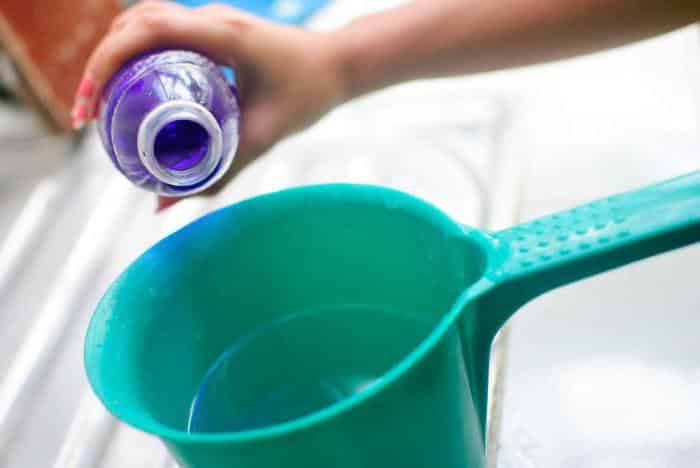
Working solutions are prepared immediately before starting work, using personal protective equipment. The working solution retains its properties for up to 24 hours.
Procedure rules
The effectiveness of treatments directly depends on the correctness of the spraying procedure. Spraying is carried out in calm weather, which ensures uniform application of the drug. When the wind blows, the fungicide evaporates quickly and the amount of the agent necessary for the prevention and treatment of the plant is lost.
The treatment is carried out in the cool and evening hours of the day, since the fungicide loses its properties in bright light and temperatures above +25 FROM.
The treatment is carried out no earlier than 2 hours after the rain - it is necessary that the moisture evaporates from the surfaces of leaves and developing brushes. When spraying, the working solution should completely cover the surface of leaves, branches, tree trunks and root surface.
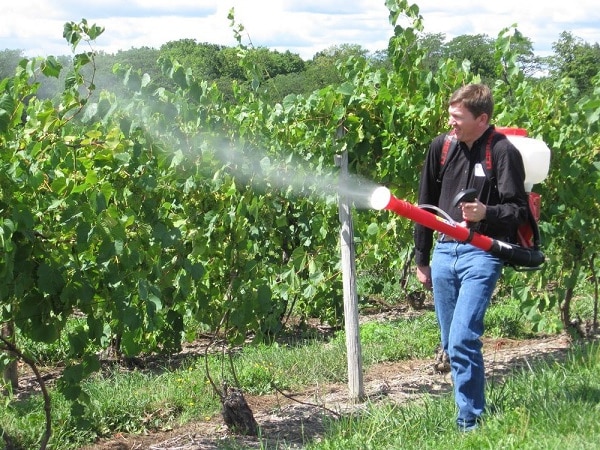
Precautions
When working with a fungicide, individual protective equipment must be used: overalls or a canvas protective suit, with fastened sleeves, rubber boots, rubberized gloves, a respirator, goggles, and a hat.
Perform work in calm weather so that the drug does not get on a person. After processing, wash clothes with detergents. Rinse shoes, glasses, gloves, equipment and aids used: pump, bucket with water.
Timing and frequency of processing vineyards
For the prevention of infection of grapes with powdery mildew (regardless of the fact of the disease of the plant in the previous year), the plants are treated before flowering and after flowering, during the period when the berries are set on the brushes.
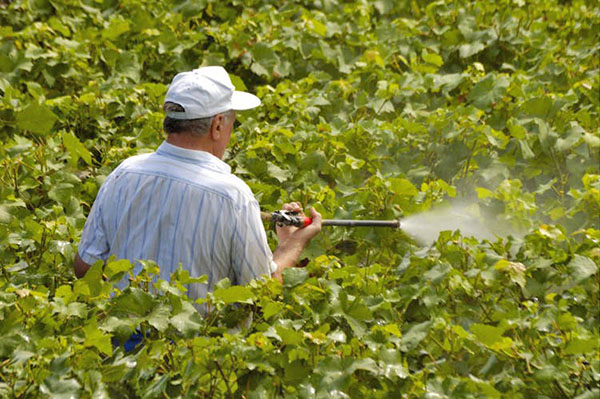
If the grapes are infected with the spores of pathogenic fungi, the processing is performed 30 days before the harvest ripens. In the case of a plant disease, spraying is carried out 4 times during the year: before flowering, after flowering, 30 days before the harvest ripens and in the fall, before the plant leaves a state of dormancy.
Storage conditions and shelf life of the fungicide
The drug is stored in a cool place, preventing it from freezing and heating over +25 C, at high temperatures it loses its active properties. Store in places that are not used to contain food. The drug has a long shelf life - up to 4 years; when opening a large package, the preparation is quickly and hermetically sealed. After opening, the drug is stored for up to 2 years.
Falcon's cost and analogues
There are various types of fungicides, with properties similar to Falcon, with disinfecting properties, directed against pathogenic strains of fungal spores that cause grape diseases.
These drugs include: Horus, Topaz, Strobi, Quadris. Falcon's advantages are economy, low cost and toxicity; the disadvantage is the narrow effect of the drug.The average cost of the drug is about 12,000 rubles for 5 liters of the drug, an ampoule of 2 milliliters costs from 20 rubles.
